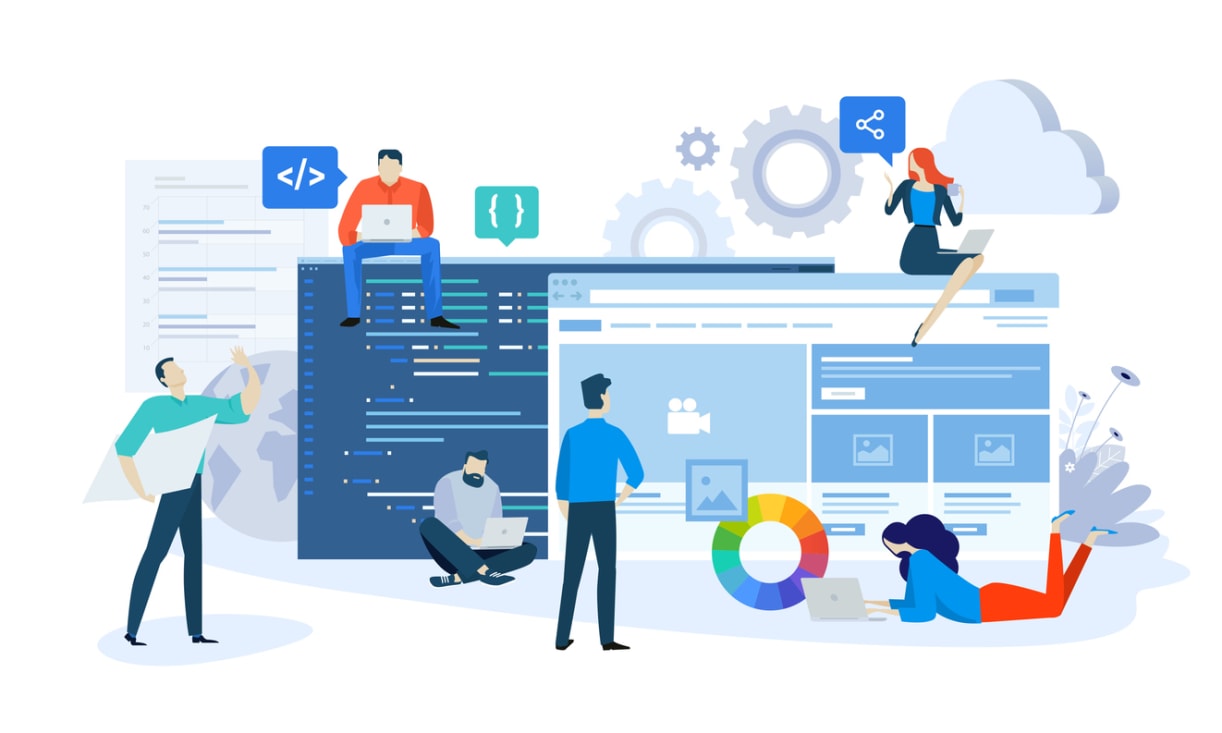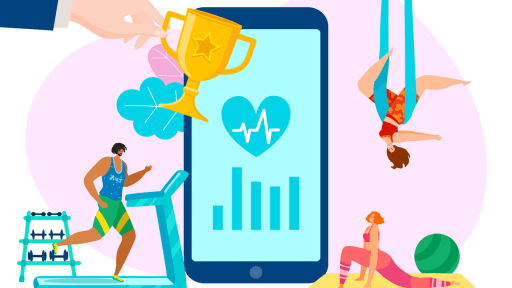In the vibrant realm of design, the best ideas emerge not in solitary confinement, but from the alchemy of collaboration. The magic happens when creative minds convene, bringing to the table a diverse palette of perspectives, skills, and experiences. But how to orchestrate this symphony of creative minds, especially in a world where remote work is on the rise? The answer lies in design collaboration software.
Key takeaways
- Design collaboration software unlocks the potential of creative teams by providing an effective platform for communication and project management.
- Popular design collaboration tools include Asana, Trello, Jira, Figma and InVision to facilitate different aspects of the process.
- The future of design collaboration includes virtual meetings and cloud storage to make it more efficient.
Unlocking team potential with design collaboration software

Design collaboration tools like Figma, InVision, and Marvel act like a conductor’s baton, directing the symphony of creative workflows. These platforms go beyond simple file sharing or messaging apps. They are powerful tools designed to enhance communication, stimulate creativity, and streamline project management for design teams. In fact, they can be considered some of the best design collaboration tools available.
Think of these tools as a digital canvas where creativity unfolds in real-time. Designers can work together on the same design files, provide clear feedback, and witness design iterations come to life.
For remote and geographically diverse teams, these tools function as a virtual design studio, promoting unity and coherence.
Defining the landscape of design collaboration tools
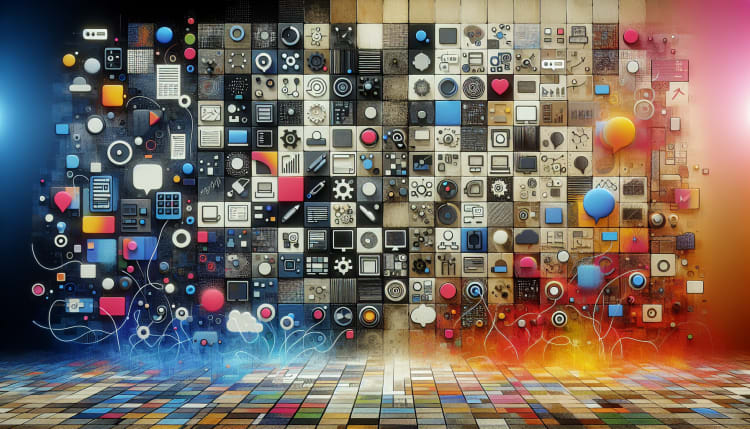
The landscape of design collaboration tools is as diverse as it is vast. From project management tools like Asana to prototyping platforms like Figma, each tool offers unique features tailored to cater to different aspects of the design process.
Figma is a cloud-based design tool allowing users to create and work together on digital designs like user interfaces, wireframes, or graphics. This is an example of how advanced technology is used in the design industry. Conversely, tools such as UXPin Merge offer features like version control for design files, synchronizing changes to the repository.
Notion, another notable tool in the design collaboration landscape, is a Wiki-style tool effective for collecting references collaboratively. Conceptboard is another tool, a whiteboard application engineered to encourage collaboration among design teams, by allowing users to brainstorm UX functionality, archive files, and gather feedback.
Each tool, with its distinct features and benefits, enriches the design collaboration landscape.
The pioneers of project management for design teams
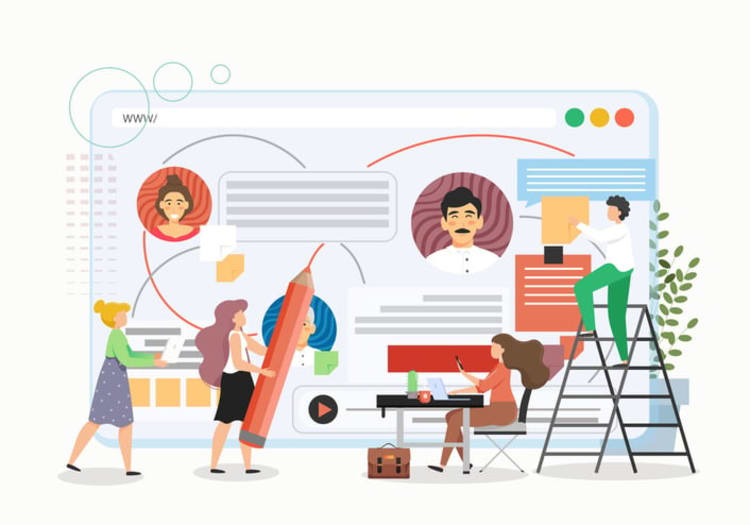
In project management, popular project management tools such as Asana, Trello, and Kumospace spearhead the field, providing comprehensive solutions for design teams. These tools manage the labyrinth of tasks, deadlines, and progress tracking that often accompanies design projects, ensuring the team stays on track and on the same page.
Asana, Trello, and Kumospace, each boasting unique features, provide a solution to the complexities of project management. Here’s a breakdown of what each tool offers:
- Asana emphasizes task management and project tracking
- Trello is renowned for its Kanban boards and task lists
- Kumospace stands out with its highly configurable features for tracking projects
Asana: orchestrating creative workflows
Asana, a project management tool, functions like a stage director, managing the grand spectacle of creative workflows. It assists teams in managing their workflows by offering features including task management, project tracking, and collaboration tools.
Asana is particularly well-suited for larger organizations that require detailed project management capabilities. It provides a centralized platform where tasks can be tracked, project progress can be monitored, and team members can collaborate seamlessly. This positions it as a potent tool in maximizing the efficiency of creative teams.
Trello: visualizing tasks with kanban boards
Trello functions as a visual compass for design projects, providing a clear visual overview of tasks allocated to each team member. Agile is widely known for its Kanban board task management approach. This system essentially breaks down the work board into three sections - “Waiting”, “In Progress” and “Completed”.
This visual approach to task management aids in helping users track progress and managing projects, simplifying work organization and prioritization for teams. Trello offers the following features to help team members track their projects and observe the progress of other projects:
- Tags
- Labels
- Color-coding
- Other visual indicators
Kumospace: Streamlined Project Management for Any Team
Kumospace is a versatile project management tool designed to keep teams organized and aligned. It brings together task management, document sharing, collaboration, and time tracking, all in one place. Whether you’re running a small creative agency or managing complex enterprise projects, Kumospace helps teams of all sizes streamline their workflows, stay on schedule, and communicate effortlessly.
The core of real-time collaboration: interactive prototypes and feedback

Interactive prototypes and feedback tools form the core of creative collaboration. These tools, like Figma and InVision, are the dynamic duo that powers real-time collaboration, enhancing teamwork and communication.
Figma, for instance, is a design tool that enables users to collaborate on designs and prototypes in real-time, regardless of their geographical location. On the other hand, InVision provides wireframing tools and templates that facilitate the transition from design to development. These tools are the fulcrum of real-time collaboration, fostering a space where creativity flourishes.
Figma: live design collaboration
Figma is a design tool that’s akin to a live concert of ideas. It enables live design collaboration, allowing teams to work together on designs and prototypes in real-time, no matter where they are located.
Figma’s features include:
- Real-time collaboration
- Cloud-based storage
- Commenting and feedback
- Design system management
- Interactive design
These features facilitate efficient cross-site collaboration, boost employee retention, and simplify remote team communication.
Figma unites people, enabling effortless collaboration and communication among team members.
InVision: from concept to completion
InVision, a design tool, simplifies the entire design process, from conception to completion. It offers a plethora of features, including Specs, Freehand Tool & Commenting Tool, and Feedback Collection and Management.
The features of InVision aid the entire design journey. It includes:
- Efficient collaboration
- Optimized design review process
- Tools for managing updates collaboratively
- Complete control over who can view or edit the design system
InVision is like a chameleon, adapting to the diverse needs of design collaboration.
Visual feedback tools: streamlining design revisions

Visual feedback tools such as Filestage and Red Pen serve as an additional perspective in the design process, optimizing design feedback by offering a platform to share design files, gather feedback in one place, and approve work after feedback has been implemented.
These tools offer a streamlined approach to design revisions. They enable design teams to share their work with clients and team members, gather feedback, and make necessary revisions swiftly and effectively. With these tools, design revisions become a smooth, efficient process rather than a painstaking task.
Filestage: centralized feedback collection
Filestage, a project management tool, acts as a hub for feedback, centralizing feedback collection in one place. It provides a platform where reviewers can share their feedback, view what others have suggested, and reply directly to existing feedback.
Filestage makes it easier than ever to manage and track feedback from different stakeholders. It ensures a transparent and organized collaboration process, making it easy to track and manage feedback from different stakeholders. Filestage allows you to move from scattered feedback to organized collaboration.
Red Pen: quick visual feedback for fast iterations
Red Pen, a visual feedback tool, is designed to speed up design iterations. It offers a straightforward web app that enables users to upload design files and share them with clients and team members for feedback.
Red Pen is particularly beneficial for rapid design iterations. Its streamlined interface and specific scope make it an efficient tool for gathering and implementing design alterations quickly. With Red Pen, design iterations become a quick, efficient process instead of a lengthy one.
Immersive collaboration experiences with Kumospace
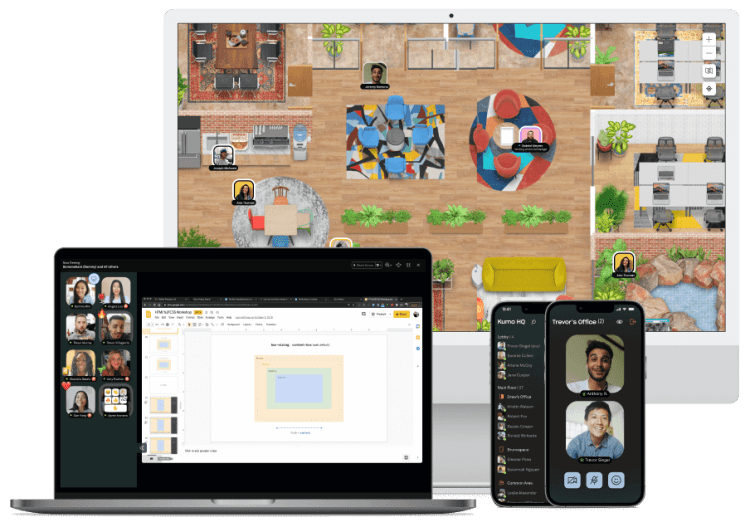
Within the sphere of design collaboration, Kumospace provides a unique and immersive experience. It is like a virtual playground where creativity thrives, providing a virtual platform for remote team communication and interaction.
Kumospace offers the following features:
- Video chat
- Virtual whiteboard
- Multiple meeting hosts
- Annotation tools
- Picture-in-picture mode
It enables participants to explore the virtual space and interact with one another, thus increasing engagement and collaboration. Kumospace allows design collaboration to overcome geographical boundaries, generating a dynamic and engaging experience.
Bridging communication gaps in design projects
Communication is the lifeblood of any successful design project. But often, communication gaps in design projects can prove to be stumbling blocks. These gaps can lead to misunderstandings, delays, and even impact the overall quality of the design project.
Design collaboration tools, such as a design collaboration tool, serve as a potent solution to bridge these communication gaps. They provide a centralized collaboration platform for designers and other team members to collaborate and share their work, ensuring that everyone is on the same page and minimizing the potential for miscommunication or misunderstandings. In today’s fast-paced design environment, teams need design collaboration tools to stay efficient and productive.
These tools, by promoting effective communication, can lead to successful design projects.
Harnessing the power of online whiteboards
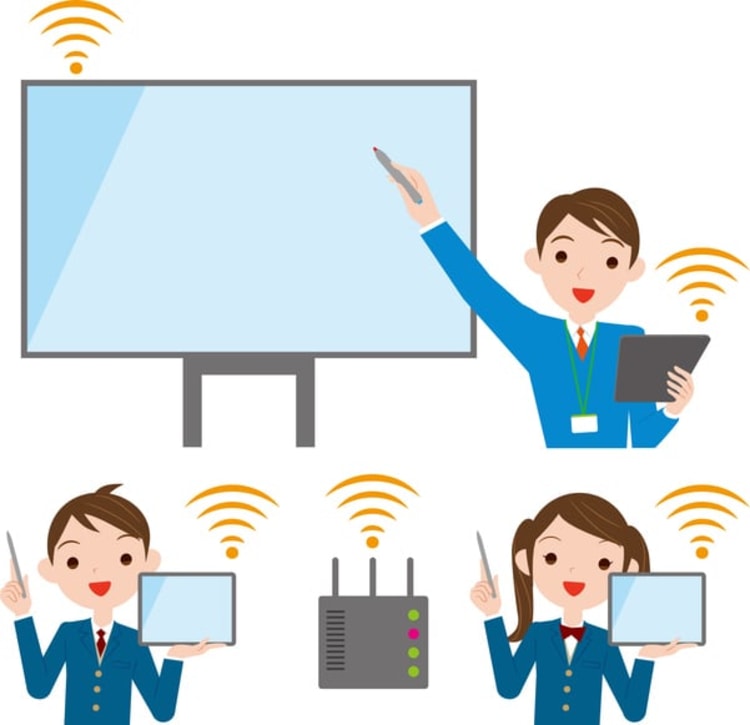
In the realm of design collaboration, online whiteboards like Miro and Mural are proving to be game-changers. These platforms are like digital canvases, providing an open space for brainstorming, planning, and ideation in a collaborative environment.
For instance, Miro offers a range of features for design collaboration, which include:
- Real-time collaboration
- The capability to leave comments and feedback
- Create notes and designs
- Move elements around
- Communicate through embedded video calls or online chats
Mural, on the other hand, provides a platform for generating ideas, organizing thoughts, and transforming ideas into actionable plans. These online whiteboards empower creative teams to express their creativity and brainstorm without constraints.
Integrating design systems for consistency
Consistency is pivotal in design projects. To maintain a cohesive and unified design language, it’s necessary to integrate design systems across projects.
Adobe Creative Cloud Libraries is an example of a digital asset management platform. It is integrated with Adobe Creative Cloud. It makes the task of a designer easier by helping them store, organize and share creative assets. These include:
- graphics
- colors
- character styles
- logos
These assets can be used across different Adobe apps and projects. Integrating design systems allows creative teams to maintain consistency across projects, promoting a unified design language.
The future of design collaboration: virtual meetings and cloud storage

Looking forward, virtual meetings and cloud storage are set to transform the future of design collaboration. Online collaboration tools, such as WebEx, Livestorm, and Zoom, bridge geographical distances, improve efficiency, and facilitate easy scheduling.
On the other hand, cloud storage is set to have a considerable influence on future design collaborations, including the use of mobile apps. It can reduce costs and complexity by eliminating the need for purchasing and installing software.
Going forward, these advancements hold the promise to revolutionize how creative teams collaborate, making the creative process seamless and efficient.
Summary
In the vibrant world of design, collaboration is the key to unlocking creativity, efficiency, and innovation. Design collaboration tools, with their diverse features and functionalities, serve as the bridge connecting creative minds and facilitating a seamless design process. From project management tools like Asana, Trello, and Jira, to real-time collaboration platforms like Figma and InVision, to visual feedback tools like Filestage and Red Pen, these tools are revolutionizing the way creative teams work. As we look towards the future, the advent of virtual meetings and cloud storage promises to further transform the landscape of design collaboration, ushering in a new era of creative synergy.
Frequently asked questions
A design collaboration software provides a platform to allow design teams to communicate and work together in real-time, share feedback, and efficiently manage design files. It is an invaluable tool for creative teams to help them collaborate on projects and solve problems.
Collaboration software includes communication, conferencing, and coordination tools to enable teams to work together effectively.
For design collaboration, companies use tools such as Figma, InVision, Miro, and Lucidchart. These tools enable real-time collaboration and help ensure smooth communication throughout the entire design process.
A collaborative design system is an approach that brings together team members with different backgrounds and mindsets to design a solution, build a shared understanding of the problem and provide means for working together to decide which functionality and interface elements should be implemented. This system enables organizations to transform their values into standards that form components efficiently used by customers.
Design collaboration tools are specialized software that allow teams to work together on projects, provide feedback, and organize design files efficiently.
